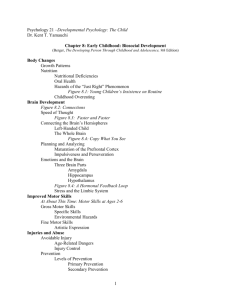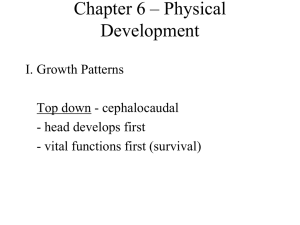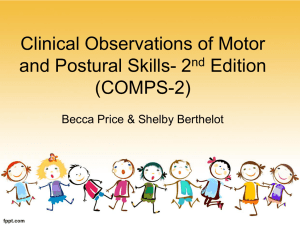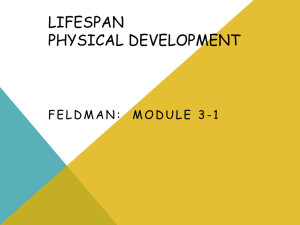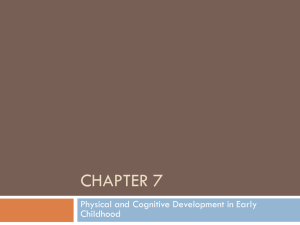Slides
advertisement
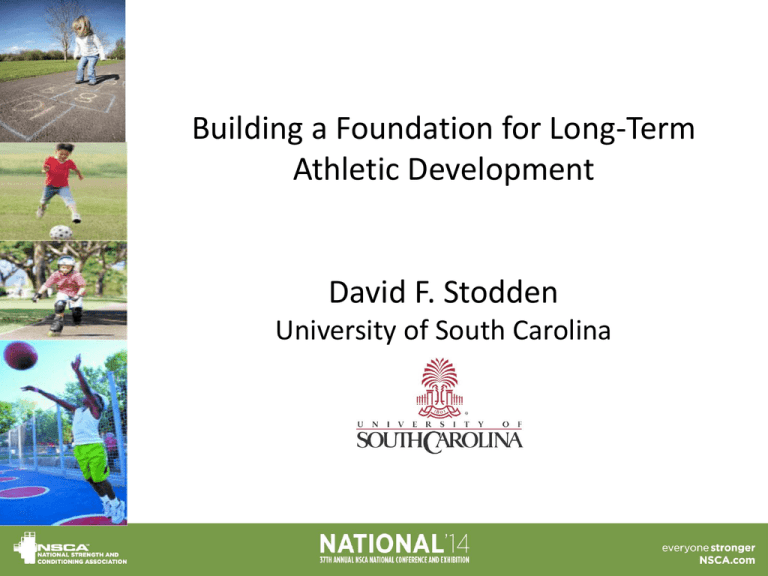
Building a Foundation for Long-Term Athletic Development David F. Stodden University of South Carolina LTAD = Long Term = Initiate Early A Developmental Perspective Models for Physical Development What do All Models Have in Common? • Develop “Deep Grammar” Movement Principles (Clark, 2005) – – – – – – – – – Weight Shift Dynamic Balance Dynamic Stability Rotational Capability Linear Translation of COM Symmetrical Movement Coordination Perturbation Response Mechanisms Concentric/eccentric Muscle Action Relative Timing of Sequential Movements • In essence – Functional Movement Capability – The ability to coordinate & control your COM and extremities in a gravitybased environment to effectively accomplish a goal. How can Early Development of Coordination “Skill” Impact LTAD in Childhood? Direct vs. Indirect Mechanisms • Place a high demand on the neuromuscular system (Direct) • Demonstrate high muscle activity/loading levels and resultant force/power outputs (Direct) • Repeated high force/power outputs associated with practice and performance promote muscular endurance (Direct) • Persistence in games and sports (i.e., running, dance, softball, swimming, soccer, basketball, tennis) promote cardiorespiratory endurance and PA (indirect) • Increased persistence in activities inherently demanding skill development of muscular strength/endurance and cardiorespiratory endurance and influence body composition (indirect & direct) • Improved skill development impacts perceived competence/self efficacy across time (direct) Early Development – Force/Strength Strength is a multidimensional construct Physiologic muscle fiber characertistics Muscle mass Neural Intra-muscular coordination/control Inter-muscular coorindation/control What are we developing in children? Neural – coordination & control Motor unit recruitment Motor Unit synchronization Rate of firing Decreased co-activation of agonists & antagonists How does Development of Coordinated Movement Patterns in Early Childhood Relate to Athletic Development? • “Deep Grammar” Principles • Principles take years to Develop – If not developed early, will participation continue into middle/late childhood? Lack of early success leads to decreased participation• perceived competence • self-efficacy • motivation Motor Coordination and Fitness Trajectories - 6-10 yrs Rodrigues, Stodden & Lopes, submitted Motor Coordination & PA - 6-9 yrs Lopes VP, Rodrigues LP, Maia JA, Malina RM. 2010. Motor coordination as predictor of physical activity in childhood. Scand J Med Sci Sports; 21:663-9 Motor Coordination – BMI D’hondt, E.D., Deforche, B. Vaeyens, R. et al., 2011. Gross motor coordination in relation to weight status and age in 5- to 12-year-old boys and girls: A cross-sectional study. International Journal of Pediatric Obesity, 6 (2), 1-9 Faigenbaum et al., 2011 Pediatric Exercise Science, 2011, 23, 573-584 • INT (N = 40) 7-8 yrs. – 12 min – 2/wk for 8 weeks (presses, jumps, gross coordination activities) • Progressed in complexity of BW exercises across 8 weeks. Long-Term effects? Proficiency Barrier? Stodden, et al. (2013). Associations among selected motor skills and health-related fitness: Indirect evidence for Seefeldt’s proficiency barrier? RQES, 84, 397-40. When do we need to start LTAD? What is missing? A Foundation! • Early Childhood – 3 to 6 yrs – Develop “Deep Grammar” – “FUN”damental motor skills - functional movement capabilities • Coordination & Control – Neuromotor Development – Perceived competence is always high – so keep it high • If FMS is low in middle childhood (7-9 yrs), perceived competence, self efficacy, motivation to participate will follow • What if 7-9 year-old is lacking “Deep Grammar”? – Are they still participating? It may already be too late… – Consequences for LTAD, but also for lifespan health trajectories – Future injury risk?

